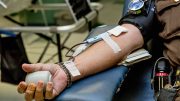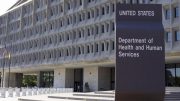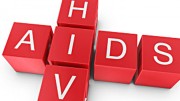The U.S. Centers for Disease Control (CDC) recently announced $185 million in funding for three new programs to prevent HIV infection among transgender people and gay, bisexual, and other men who have sex with men (MSM), with a particular focus on MSM of color. The programs are part of a multi-pronged strategy to address the disproportionally heavy burden of HIV infection on MSM and transgender men and women. These programs will help health departments and local HIV prevention partners deliver and apply the most effective HIV prevention tools.
In particular, CDC plans to award up to $125 million over a three-year period to state and local health departments to expand the use of: 1) pre-exposure prophylaxis (PrEP) for uninfected MSM and transgender people who are considered at substantial risk for HIV infection; and 2) ongoing medical care and antiretroviral treatment for people already living with HIV. Health departments will be funded to provide PrEP information and referrals and to conduct outreach and training to increase the number of healthcare providers who are knowledgeable about PrEP and offer it to their patients. The main objective of this program is to increase the PrEP knowledge and uptake among MSM and transgender people at highest risk of infection. A total of 24 health departments in areas severely impacted by HIV are eligible to apply for these funds.
Health departments will also be funded to expand the use of HIV surveillance data for increasing connection to, or re-engagement in, HIV care and services. This program is designed to help persons who have already been diagnosed with HIV infection but are not currently accessing care and services, especially affected MSM and transgender people. CDC notes that 12 health departments in areas where MSM are severely impacted by HIV and that have sufficient clinical data are eligible to apply for these funds. [pullquote]In addition, the Department of Health and Human Services Secretary’s Minority AIDS Initiative Fund (SMAIF) plans to make an additional investment of up to $60.5 million over a four-year period to intensify HIV prevention efforts that focus specifically on MSM of color.[/pullquote]
In addition, the Department of Health and Human Services Secretary’s Minority AIDS Initiative Fund (SMAIF) plans to make an additional investment of up to $60.5 million over a four-year period to intensify HIV prevention efforts that focus specifically on MSM of color. In particular, the new SMAIF funds will support the development of collaborative service networks by state and local health departments. CDC notes that these networks may include local community-based organizations, clinics, and providers of HIV prevention and care, mental health services, substance abuse treatment, and critical social supports, such as housing and employment services. A total of 28 state and local health departments representing communities with severe epidemics among MSM of color are eligible to apply for the new SMAIF dollars.
“We have more powerful HIV prevention tools than ever before. Now, we need to get them into the hands of the people who need them the most,” noted Dr. Jonathan Mermin, Director of CDC’s National Center for HIV/AIDS, Viral Hepatitis, STD, and TB Prevention. “By harnessing the power of recent scientific breakthroughs, we can change the course of the epidemic among MSM and transgender people―who continue to face the highest risk for infection in this country.”
New York’s “Ending the Epidemic” Initiative Could Net Billions in Healthcare Savings
New York state’s Ending the Epidemic (ETE) initiative, announced by Governor Andrew Cuomo in June 2014, has the ambitious goal of reducing the state’s annual new infections from 3,200 in 2013 to below 750 in 2020, along with substantial reductions in AIDS-related illnesses and deaths. Although significant investments will be required to meet these targets, the potential savings will far outweigh the costs, according to a new report, Ending the Epidemic (ETE) in NYS: Projected Fiscal Impact of Recommended Expansions of HIV Prevention, Antiretroviral Treatment, and Housing Supports, published by Housing Works and the Treatment Action Group (TAG).
“Ending AIDS as an epidemic is not just the right thing to do for the health of New Yorkers―it’s also cost-effective. We simply can’t afford a status-quo approach to HIV,” the report argues. “Every new HIV infection costs $443,904 in health spending alone (the discounted present value of $798,300 in lifetime HIV treatment costs). ETE implementation would improve the health of New Yorkers living with HIV and prevent 10,850 new primary HIV infections between now and 2020, as well as thousands of secondary downstream infections.”
The Housing Works and TAG analysts calculate that, “The ETE plan is expected to generate over $6.8 billion in total Medicaid savings, reducing Medicaid spending by a net $4.5 billion after factoring in an investment of $2.3 billion for incremental treatment costs. The expansion of essential housing services called for in the ETE plan will alone produce net public savings of at least $1 billion through increased stability and improved health outcomes for New Yorkers with HIV who are currently homeless or unstably housed. An AIDS-free New York stands to gain much―in both human and fiscal terms.”
HHS Launches “Positive Spin” Digital Storytelling Project to Promote Access to HIV Care
The U.S. Department of Health and Human Services (HHS) recently launched Positive Spin, an online educational tool that uses personal storytelling to encourage people to get tested for HIV, and if infected, to access HIV care, receive antiretroviral treatment (ART), and achieve and maintain an undetectable HIV viral load. Described as “a series of real stories from real people about their unique experiences along the HIV Continuum of Care,” Positive Spin focuses on the personal experiences of five HIV-positive, gay Black men. In photos, text, and short video clips, the men describe their backgrounds and how they have successfully navigated the HIV care continuum, from their initial decision to be tested for HIV, through accessing HIV care and treatment, and ultimately achieving viral suppression, which helps those with HIV stay healthy, live longer and dramatically reduce their chances of passing the virus to others. “These compelling and emotionally engaging stories will serve as an important tool in helping to counter the misconceptions, stigma, and discrimination that continue to create significant barriers to HIV testing and treatment for all populations,” HHS Secretary Sylvia Burwell noted when Positive Spin was announced in late March. [pullquote]“These compelling and emotionally engaging stories will serve as an important tool in helping to counter the misconceptions, stigma, and discrimination that continue to create significant barriers to HIV testing and treatment for all populations,” HHS Secretary Sylvia Burwell noted when Positive Spin was announced in late March.[/pullquote]
National Asian and Pacific Islander HIV/AIDS Awareness Day (May 19)
The 11th annual National Asian and Pacific Islander HIV/AIDS Awareness Day will be held on Tuesday, May 19. The theme is “Saving face can’t make you safe. Talk about HIV for me, for you, for everyone.” The lead agency for this Awareness Day is The Banyan Tree Project―a national campaign to end the silence and shame surrounding HIV/AIDS in Asian and Pacific Islander communities. To help commemorate the day, we’ve compiled an annotated list of online resources focusing on HIV/AIDS among Asians and Pacific Islanders.
- National Asian and Pacific Islander HIV/AIDS Awareness Day. AIDS.gov web page with links to information and resources about HIV/AIDS in this community.
- HIV/AIDS and Native Hawaiians/Other Pacific Islanders and HIV/AIDS and Asian Americans. Web pages from the Office of Minority Health with detailed statistical information about HIV testing, HIV and AIDS cases, modes of HIV exposure, and death rates among Native Hawaiians and other Pacific Islanders and Asian Americans.
- Substance Use Among a National Sample of Asian/Pacific Islander Men Who Have Sex with Men in the U.S. (Journal of Psychoactive Drugs)
- Stress and Coping with Racism and Their Role in Sexual Risk for HIV Among African American, Asian/Pacific Islander, and Latino Men Who Have Sex with Men. (Archives of Sex Behavior). Free full text also available.
- Risks for HIV and Other Sexually Transmitted Infections Among Asian Men Who Have Sex with Men in Vancouver, British Columbia: A Cross-Sectional Survey. (BMC Public Health). Free full text also available.
- Social Network Characteristics and HIV Risk Among African American, Asian/Pacific Islander, and Latino Men Who Have Sex with Men. (Journal of Acquired Immune Deficiency Syndromes). Free full text also available.
*Eric Brus is the Director of Health Information at AIDS Action Committee. This report is produced by the Health Library of the AIDS Action Committee in collaboration with the New England AIDS Education and Training Center Minority AIDS Initiative Project. The full version is available online.








